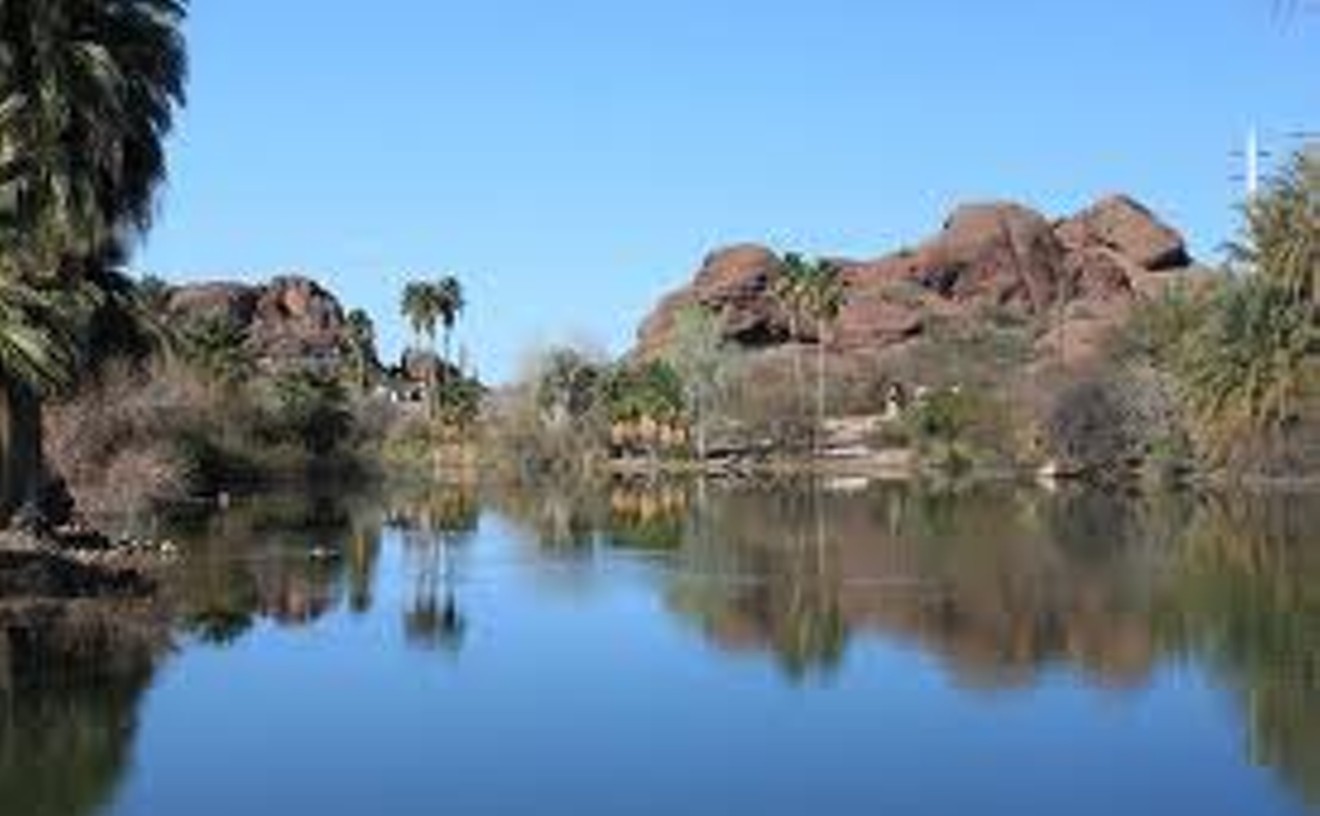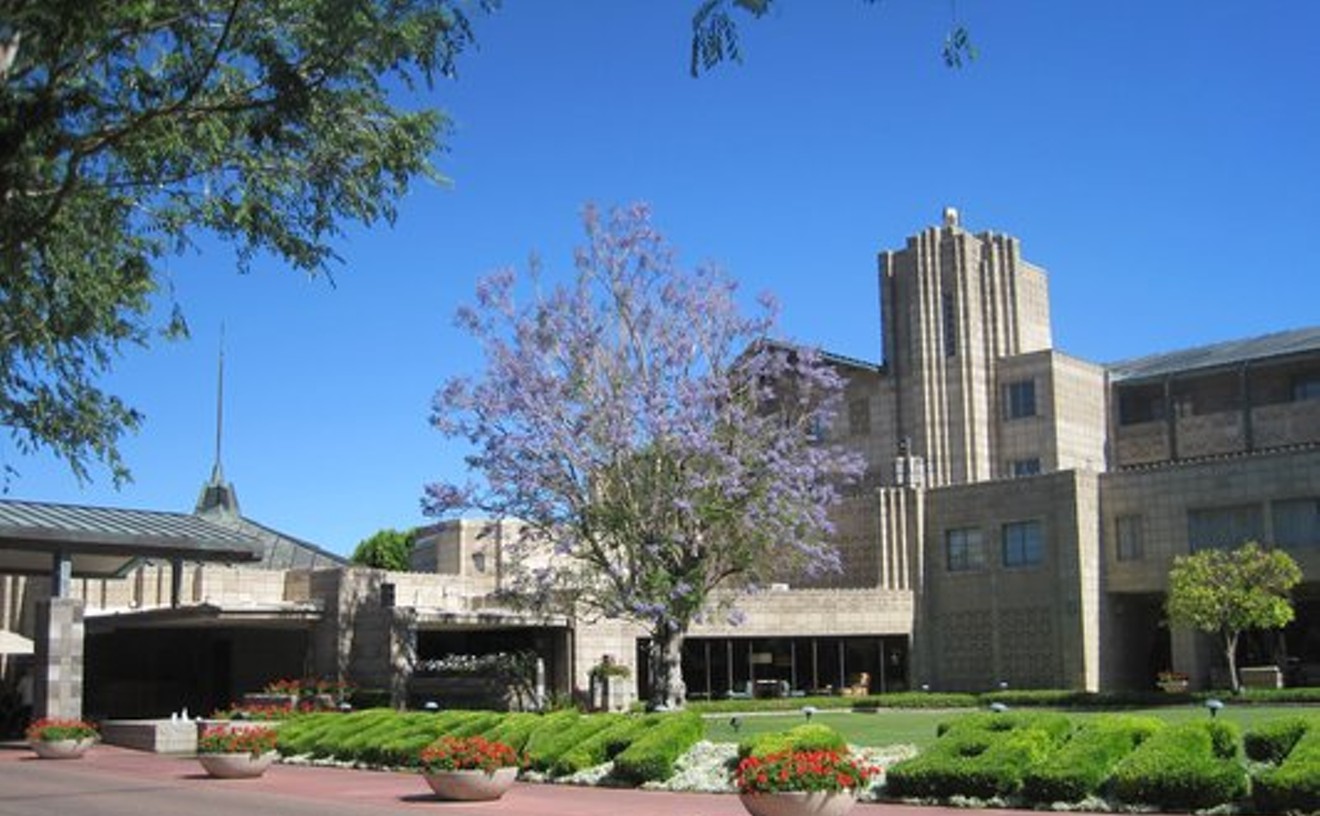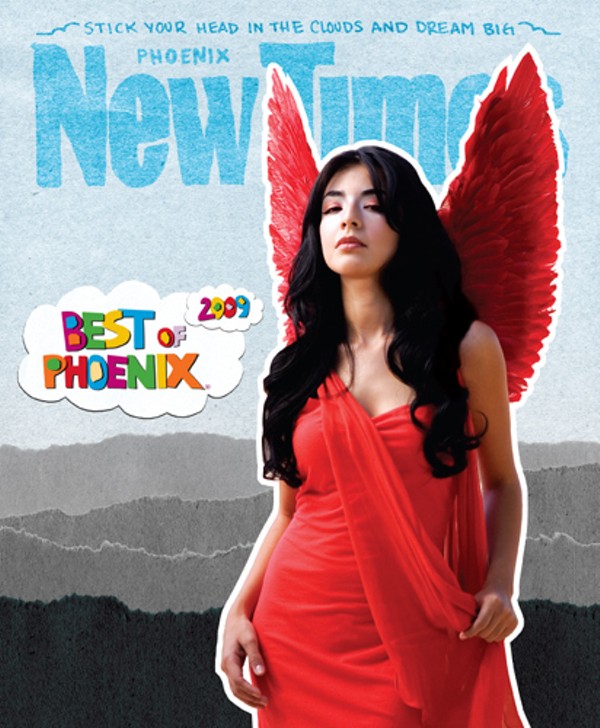We always applaud efforts to raise money for arts-related projects in the Valley. And we were especially impressed with a street party-cum-art exhibit sponsored by Martha + Mary, a group formed by artist/real estate developer Sloane McFarland that's dedicated to resurrecting Phoenix buildings from the dead and turning them into ultra-hip urban hangouts, like Lux Coffeebar on Central Avenue.
Martha + Mary's April family-friendly bash (you could tell the clientele it attracted by the Vespas parked en masse out front) was an open-air affair in a blacktopped area next to Lux and featured live music, comfort food and drink, and kid-centric games and activities. All proceeds from the street fair went to underwrite ASU Art Museum's upcoming "Open for Business" exhibition, a clever fundraising idea at a time when the budgets of museums and other cultural institutions have been slashed more savagely than a Freddy Krueger victim.
But the real draw of the afternoon was a four-hour exhibition by some of the Valley's most talented artists, including Jon Haddock, Gregory Sale, Carrie Marill, Sue Chenoweth, Matthew Moore, and Post-Commodity's Steve Yazzie and Kade Twist. Video, multi-media installations, wall painting, three-dimensional sculptures, drawings — all this and only four hours to enjoy the formidable show. Here's hoping that the street fair/exhibit becomes an annual spring event. And maybe if we beg, plead, nag and whine, next year's exhibition will remain open for viewing a lot longer.







